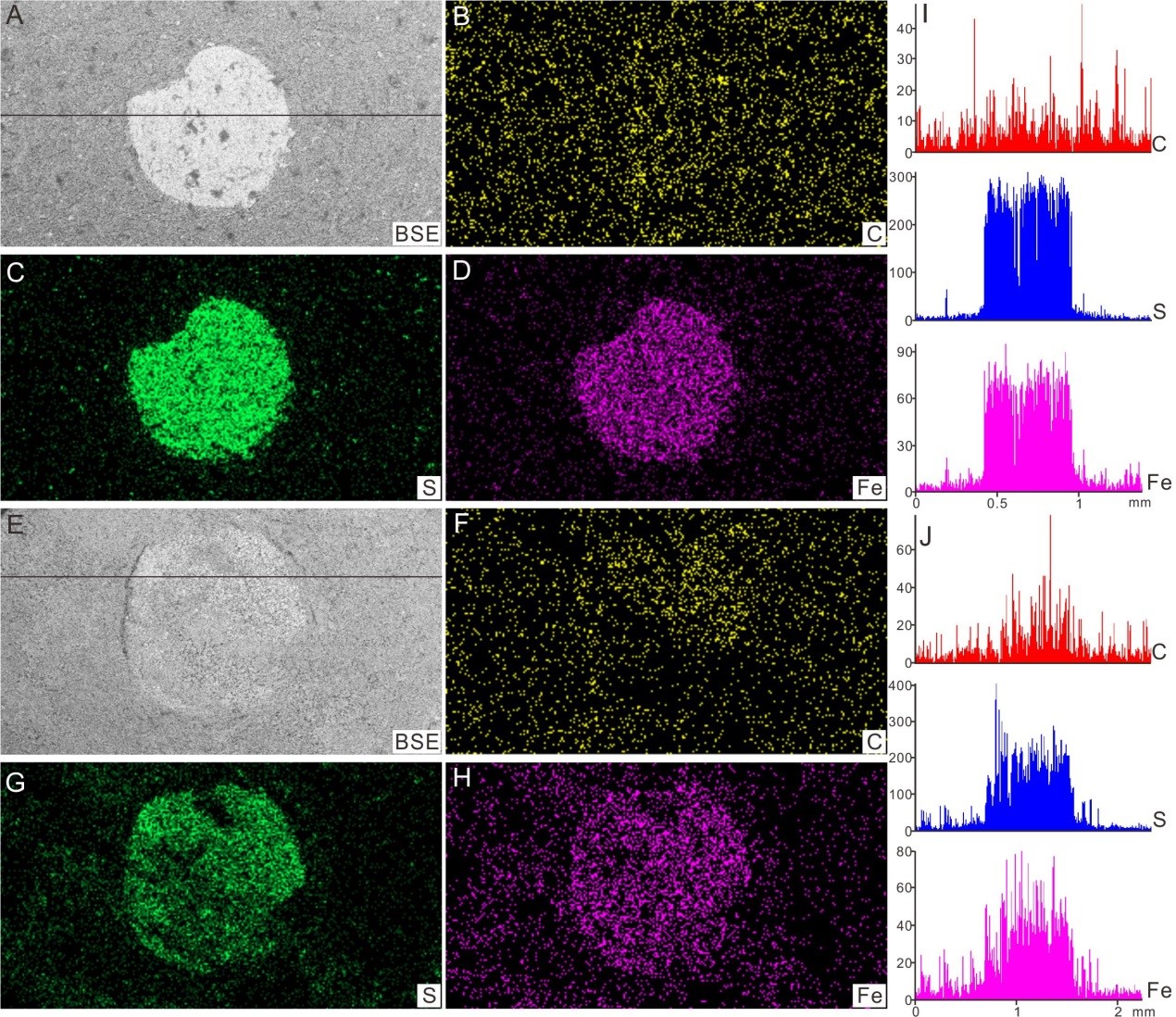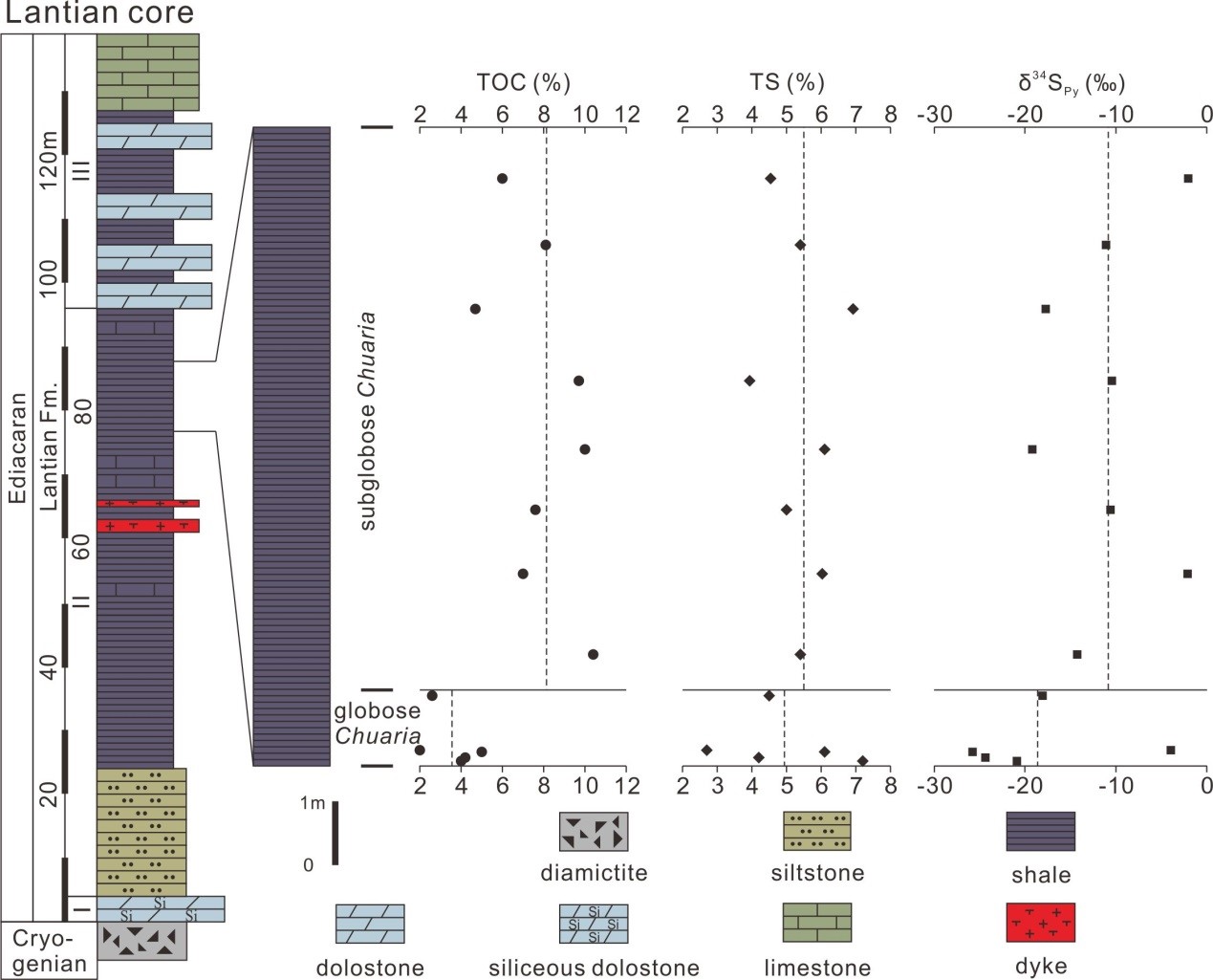
Energy Dispersive Spectrometer (EDS) elementalmapping for a globose Chuaria (A)–(D), and a subglobose Chuaria (E)–(H); linear elementalmapping for a globose Chuaria (I) and a subglobose Chuaria (J)
Pyritization represents a major taphonomic pathway for exceptional preservation of soft tissues. Although various Ediacaran Lagerstätten contain pyritized fossils, the controls on this taphonomic pathway prior to the Precambrian-Phanerozoic transition have only recently received significant attention, and no studies have yet thoroughly investigated environmental conditions facilitating exceptional preservation via pyritization in the early Ediacaran. Here, to address this deficiency, Dr. GUAN Chengguo from Nanjing Institute of Geology and Palaeontology, Chinese Academy of Sciences and his colleagues investigated the preservational environments of macroscopic fossil Chuaria in the early Ediacaran Lantian Formation of South China using petrographic, electron microscopic, and geochemical data.
Chuaria occur as pervasively pyritized (spheroid-shaped) globose and non-pervasively pyritized (disk-shaped) subglobose fossils in different stratigraphic intervals. Although these different stratigraphic intervals are similar in terms of total sulfur (TS, ~5%), subglobose Chuaria shales have greater total organic carbon (TOC, ~7.9%) contents than globose Chuaria shales (~3.6%). Additionally, petrographic observations and TOC-TS cross-plots suggest that, whereas globose fossils were preserved under suboxic bottom waters, the subglobose fossils were preserved in euxinic bottom waters.

Stratigraphy, TOC, TS and δ34Spy values, and their relationship with the preservation types of Chuaria fossils in the Lantian Formation.
Overall, these results affirm that pyritization in the Precambrian was generally favored in organic-poor, reactive iron-rich, sulfate-rich environments probably with slow sedimentation rates. When organics were scarce and reactive iron was abundant, bacterial sulfate reduction (BSR) created hydrogen sulfide and reactive iron concentration gradients around fossils, which kinetically and thermo-dynamically favored rapid and pervasive pyritization, as observed in globose Chuaria. Conversely, when organics were abundant and reactive iron/sulfate availabilities were limited by widespread BSR, fossils were relatively rapidly buried beneath the BSR metabolic zone of sediment, where they were principally preserved as aluminosilicified carbonaceous fossils that were compacted into subglobose forms. Thus, preservational variations among pyritized fossils in the Ediacaran may reflect differences in sedimentary organic matter content and/or bottom water redox chemistry.
This research was supported by Chinese Academy of Sciences, the National Natural Science Foundation of China, State Key Laboratory of Palaeobiology and Stratigraphy (LPS) and Natural Science Foundation of Jiangsu Province of China.
(Information Source: Nanjing Institute of Geology and Palaeontology, CAS)

